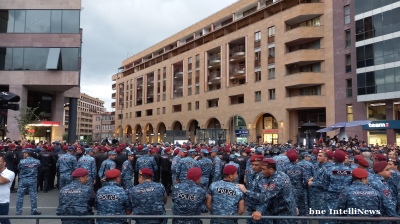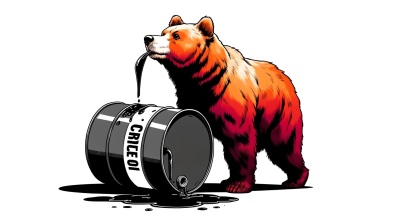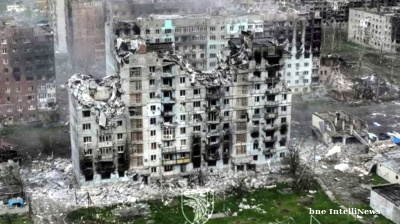The Ukraine Crisis is approaching its first birthday – the 1st Guards Tank Army first “came to rest” 250 km north of Ukraine’s border in April 2021, sparking what has been a long and strident chorus of invasion alarums. Back in April I wrote an analysis of Russia’s options and likely course of action here, which measured the probability of an invasion at “nil”. So far, it has been nice to be right, if rather lonely.
The mainstream media have consistently cried that invasion is imminent, and have firmly anchored that trope in the mass mind that Russia’s troop formations are lined up on Ukraine’s border just awaiting the “go” signal. In contrast, the facts are that Russia’s troops are stationed some 450 km by rail from the border, are in “camp” formation, with equipment parked in regular lines like cars outside a supermarket, and with personnel rotating to and from their normal bases.
Moscow has repeatedly and firmly asserted that it will not invade Ukraine. Russian public opinion (reported extensively in bne Intellinews and elsewhere) is firmly against an invasion of Ukraine. Ukrainian public opinion is also largely of the view that an invasion will not happen. Even President Zelenskiy himself has gone on record this week as saying “there is no reason for panic”, and describing an invasion as “not imminent at all”.
Ukraine’s Security Council Secretary Danilov echoed his President, saying he could see no evidence of an impending Russian invasion, and he told the BBC’s Ukraine service that he believes that the crisis is a product of domestic political pressure in the West.
Finally, Ukraine’s Defence Secretary yesterday said he had no intelligence at all implying an invasion. He went on to reject explicitly a UK report that Russian forces had formed up into 60 “strike groups” for an attack on Ukraine – a report that appears to have flowed from Boris Johnson’s inability to distinguish between a Strike Group and a normal Battalion Tactical Group – the cool modern name for a good old infantry battalion.
These messages are beginning to penetrate to the desks of the leaders of Germany, France and Italy. Chancellor Scholz has prevented Germany from supplying weapons or ammunition to Ukraine, has effectively vetoed a plan to isolate Russia from the SWIFT secure bank transfer messaging system, and has sent emollient noises east.
President Macron, meanwhile, is publicly pushing Kyiv to start delivering on the legal obligations it took on under the Minsk agreement, pressing the use of the Normandy Four format as a forum in which to move these forward. Execution of the Minsk Agreement will inevitably lead to legalised autonomy for the Luhansk and Donets Oblasts of Ukraine, which is why Kyiv has so far refused to act on it.
And as if those dove-ish actions were not enough, Prime Minister Draghi last month told a press conference that there was little Europe could do to help Ukraine, either militarily or economically, and that it should just maintain “a state of engagement” with Moscow.
In contrast to these relaxed and non-confrontational stances, the Anglophone club has increased both the volume and quantity of its alarm calls; from the recall of embassy staff and families from Kyiv, through the supply of large quantities of Javelin missiles and launchers to Ukraine by the United Kingdom, to the forward deployment of a handful of front-line aircraft and warships, and (yesterday) to a notification from the Pentagon shortening the deployment notice of two brigades of US troops from ten days to five.
These symbolic Anglophone moves have been accompanied by a stream of hysterical rhetoric, spiced with an invented Russian “plot” to set up an unknown Ukrainian politician as a puppet President after a successful invasion – a plot described by Sir Tony Brenton, former UK Ambassador to Moscow, as “…ill sourced, internally contradictory and frankly implausible”.
In sum, we have a picture in which one arm of Nato’s members – the Continental Europeans – are heading one way, while the other – the Anglophones – are heading in the opposite direction. Setting apart the feeling of satisfaction which must be prevalent in President Putin’s office at this (intended) result, the interesting question here is “why”? Why are the Anglophone members of Nato working so hard to persuade the populations of Europe and the United States that Russia plans to invade Ukraine?
We are forced to speculate, but some evidential data points can be seen. In Washington, President Biden’s administration is suffering a critical loss of credibility and popular support, in part due to the humiliation of the Afghan withdrawal (and in small part due to his evident cognitive decline).
Mr Biden badly needs (a) to look tough, and (b) to get a firm win for team USA against either Russia or China. One way of looking tough against Russia is to lead the American people to believe that Russia is indeed planning to invade Ukraine, and then to stop that plan in its tracks by the exercise of US power.
If the White House has come to the same conclusion that I have – that Mr Putin has no intention of invading – then it becomes quite rational to pump up the threat to hysterical levels, to allow events to take their course (no invasion), and then to claim the credit for a successful deterrence operation.
US policy is also, always, influenced by profit. US companies have built a long string of liquefaction trains to export liquefied tight methane to consumers around the world. At present the EIA estimates that total US export capacity is in the region of 140-150bn cubic metres per year. The original intention was to supply Asian buyers – Europe was always seen as a small potential market since it can buy cheap pipeline gas in large quantities from Russia, Algeria, Norway, the UK and Denmark.
But setting Europe at odds with Russia upsets one leg of that competitive threat, and potentially opens the door to large-scale supplies of LNG from the United States, at highly profitable end-prices and with much shorter (and more profitable) voyages from the Gulf of Mexico. The volumes of production available are highly material in the context of Europe’s gas import demand, though with the snag that a single large LNG carrier can deliver only about 0.1 bcm per voyage, creating bottlenecks both in ship-availability and in gasification terminals. The margins on offer are eye-watering. US tight gas leaves its liquefaction train at about $8 per mmBtu, while in Europe gas is currently wholesaling for around $30 per mmBtu and touched $38 at the end of 2021. If US producers supplied just 50 bcm of European gas, and if wholesale prices moderate by a third, to $20 per mmBtu, the net profit on offer would be around $1bn per month.
In London the agenda is probably more personal. Here the Prime Minister is struggling for his political life under charges of hypocrisy and outright lying over whether Downing Street followed its own stringent coronavirus (COVID-19) infection rules in 2020. Few outside Parliament believe Mr Johnson’s narrative.
Inside Parliament only 100 of the 358 Conservative members of the House of Commons have signed a letter of support for Mr Johnson (and it must be remembered that approximately 100 members of the Commons are also members of the Government at any one time). Mr Johnson’s chances of surviving as leader and Prime Minister rest on two circumstances – his ability to win a future election, and the fact that Nato is in a crisis over the future of Ukraine. The leadership’s case to MPs is partly that it would be highly dangerous to be leaderless at a time when the United Kingdom might find itself at war.
It is therefore firmly in the interests of Downing Street to inflate the risks of a major conflict to the maximum, while knowing (as does Washington) that it can later stake a claim to successful deterrence, whose credit will accrue to…Mr Johnson.
The White House and Downing Street are not the only beneficiaries of hysteria. Sitting quietly in the background all this time has been the European Commission. Here the underlying agenda flows from Articles 25 and 26 of the Lisbon Treaty. Article 25 mandates that the EU shall have a common foreign and security policy, and Article 26 mandates that member states shall (not may) give it effect under the direction of the High Representative (the EU’s Secretary of State).
So far, EU member states have completely ignored both articles, but the Commission plays a long game. In order for the Articles to gain real living force it is necessary for the influence of Nato (polluted in the Commission’s view by the relative military weight of the three Anglophone states) to diminish. For that to happen, Nato must be seen to have failed in some material and critical way.
The Commission must be quietly hoping that the Ukraine crisis will provide that failure, as the foreign policies of the Anglophones and Europeans visibly part company and the resulting geopolitical stress leaves Europeans shivering in their homes this winter for lack of gas.
In this context it is also important to remember that Nato and Europe are not coincident. Seven EU states (Finland, Sweden, Ireland, Malta, Austria, Cyprus and Croatia) are not members of Nato, but do have foreign policy weight which might be used to pull other European states away from Nato and towards Brussels. Anglophone aggression will add to that pull.
There is an old Civil Service saying – “never let a good crisis go to waste”. It seems that all of the key players in this crisis are making good use of it.
Opinion

COMMENT: Czechia economy powering ahead, Hungary’s economy stalls
Early third-quarter GDP figures from Central Europe point to a growing divergence between the region’s two largest economies outside Poland, with Czechia accelerating its recovery while Hungary continues to struggle.

COMMENT: EU's LNG import ban won’t break Russia, but it will render the sector’s further growth fiendishly hard
The European Union’s nineteenth sanctions package against Russia marks a pivotal escalation in the bloc’s energy strategy, which will impose a comprehensive ban on Russian LNG imports beginning January 1, 2027.

Western Balkan countries become emerging players in Europe’s defence efforts
The Western Balkans could play an increasingly important role in strengthening Europe’s security architecture, says a new report from the Carnegie Europe think-tank.

COMMENT: Sanctions on Rosneft and Lukoil are symbolic and won’t stop its oil exports
The Trump administration’s sanctions on Russian oil giants Rosneft and Lukoil, announced on October 22, may appear decisive at first glance, but they are not going to make a material difference to Russia’s export of oil, says Sergey Vakulenko.




